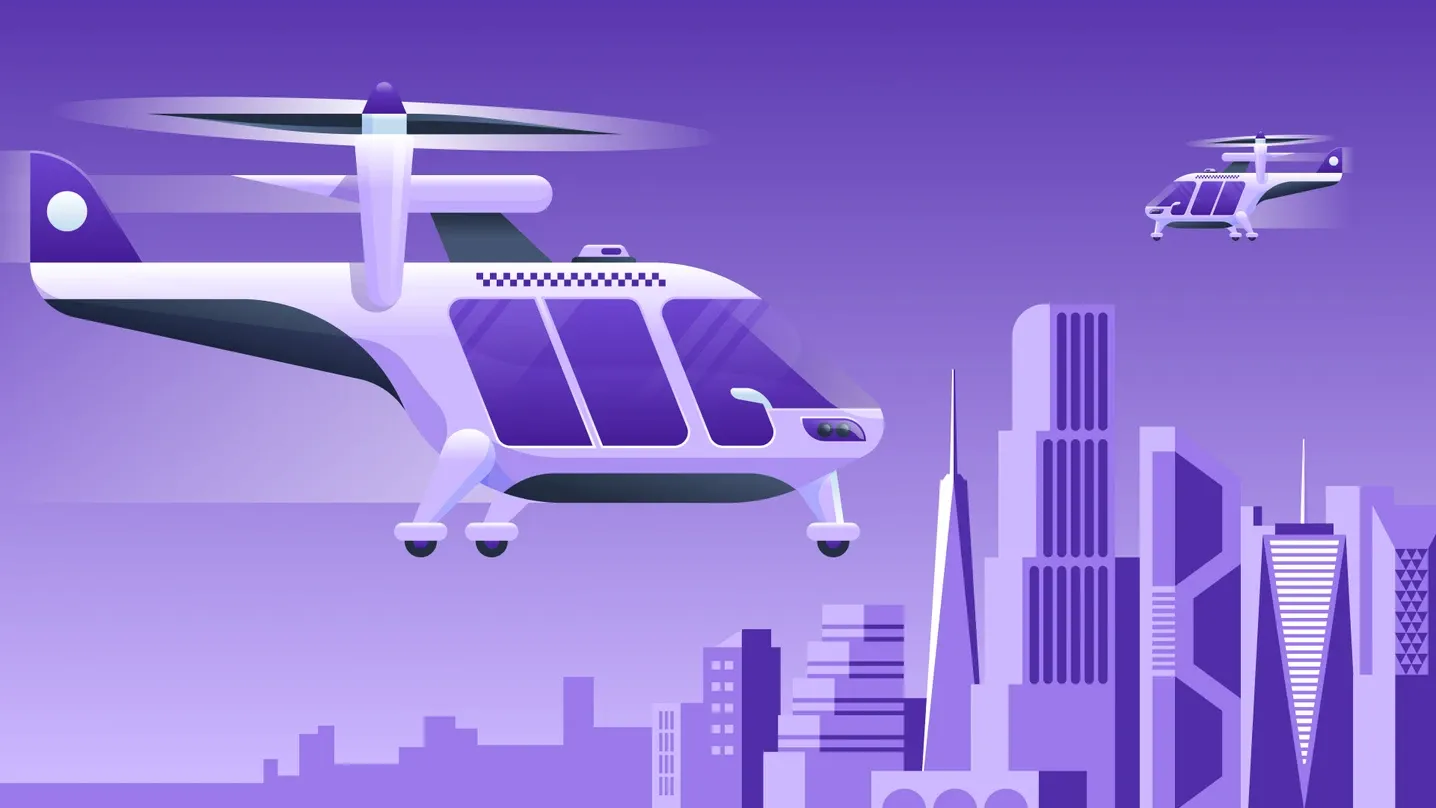Why ride-hailing services should use advanced technology
As a user of ride-hailing services, you're probably aware of the convenience and accessibility they offer. The fast-paced world of ride-hailing services has undergone significant transformations thanks to the integration of advanced technology. Embracing the cutting edge in this industry is essential for remaining competitive and meeting ever-evolving consumer expectations.

This article explores why ride-hailing services should further capitalize on the latest technological advancements. By leveraging new tech in transport, these services can elevate their operations, enhance user experiences, and contribute to a sustainable and efficient transportation ecosystem, among others.
1. Streamline operations and cut costs
Sophisticated technology plays a crucial role in enhancing the efficacy of ride-hailing services and reducing operational expenses. Data-driven decisions enabled by artificial intelligence (AI) and machine learning algorithms permit the optimization of route planning, vehicle utilization, and resource distribution. By examining historical and real-time information, AI-powered systems can recognize patterns and trends, resulting in more efficient and cost-effective operations.
Furthermore, implementing advanced vehicle maintenance and management technology ensures optimal vehicle conditions. This minimizes repair costs and reduces downtime. As such, it leads to cost savings for ride-hailing companies and contributes to a smoother, more reliable experience for users.
2. Enrich user experience

Ride-hailing services have consistently focused on customer satisfaction, with user experience as a critical component of their success. Advanced technology enables the creation of a seamless and intuitive experience, from app navigation to customer support. AI-powered chatbots and virtual assistants, built upon natural language processing, can address user queries and concerns in real-time, offering customized support and assistance.
Moreover, predictive analytics allow ride-hailing services to better comprehend user preferences and customize their offerings to suit individual requirements. By leveraging user data, companies can present personalized promotions and incentives. As a result, it fosters loyalty and enhances the overall customer experience.
3. Adopt sustainable practices
As environmental concerns become increasingly relevant, ride-hailing services must adopt sustainable solutions. Electric vehicles (EVs) have emerged as a viable substitute for traditional gas-powered cars, offering substantial benefits in terms of reduced emissions and lower operating costs. Some ride-hailing companies have committed to transitioning their fleets to electric vehicles by 2030.
The adoption of EVs aligns with the growing demand for eco-friendly transportation options and offers long-term cost savings for ride-hailing companies, as electric vehicles generally require less maintenance and incur lower fuel costs.
4. Advance safety with self-driving cars
Autonomous vehicles hold the potential to revolutionize the ride-hailing industry by improving safety, efficiency, and mobility. Self-driving cars are equipped with sophisticated sensors, advanced navigation systems, and cutting-edge software that work in tandem to minimize human error and accident risks.
As autonomous vehicle technology continues to progress, ride-hailing services that embrace self-driving cars will be better positioned to offer safer and more reliable services. This, in turn, will attract users who prioritize safety and create a more secure transportation environment for all.
5. Extend services to remote areas

Advanced technology can help ride-hailing services expand their reach to remote and underserved regions, where access to reliable transportation options is often limited or nonexistent. By leveraging state-of-the-art mapping and geolocation technologies, companies can identify potential demand in these areas and develop strategies to serve these communities effectively.
AI and machine learning can also optimize resource allocation and route planning in these regions, ensuring efficient and cost-effective service delivery. Ultimately, this will enable ride-hailing services to provide more extensive coverage and improve transportation access for people living in remote areas.
6. Integrate with diverse transportation systems
The seamless integration of ride-hailing services with other modes of transportation, such as public transit and bike sharing, can create a comprehensive, multi-modal transportation ecosystem. Advanced technology can facilitate effortless transfers between different transportation options, providing users with a more convenient and efficient travel experience.
For example, integrating real-time public transit information into ride-hailing apps can help users plan their trips more effectively. Features like in-app ticketing for public transportation can streamline the travel process. By embracing this integrated approach, ride-hailing services can be crucial in promoting sustainable and efficient urban mobility.
7. Ensure equitable pay and enhanced working conditions for drivers
Emerging technologies can aid ride-hailing services in tackling challenges related to driver compensation and the work environment. By employing cutting-edge data analytics and performance monitoring, companies can guarantee equitable pay and ideal working conditions for their drivers.
For instance, live earnings trackers can grant drivers increased transparency and control over their income, resulting in heightened satisfaction and retention. This benefits not only drivers but also users, as contented drivers are more likely to offer excellent service.
8. Bolster security measures and thwart fraud

Ride-hailing services must prioritize security to safeguard their users and reputation. Innovative technologies, such as machine learning algorithms and biometric authentication, can assist in identifying and preventing fraudulent activities.
By reinforcing security protocols, ride-hailing services can foster trust among users, ensuring they feel secure while using the platform. Moreover, these measures protect the company from potential financial losses and reputational harm caused by fraud.
9. Tackle traffic congestion challenges
Traffic congestion is a pressing issue associated with ride-hailing services, and advanced technology can help alleviate its impact. By employing smart traffic management systems and real-time data analysis, ride-hailing companies can better predict and respond to congestion, leading to shorter travel times and reduced emissions.
Integrating real-time traffic information into their platforms can also help users make more informed decisions about their transportation options, ultimately promoting more efficient travel. By taking advantage of these technological advancements, ride-hailing services can mitigate traffic congestion and create a more sustainable urban transportation landscape.
10. Facilitate inclusiveness and barrier-free services
Emerging technology allows ride-hailing services to cater to a broader audience by offering more inclusive and barrier-free transportation options. By incorporating features such as wheelchair access, voice recognition, and haptic feedback in their apps, ride-hailing companies can better accommodate people with disabilities or special needs.
For instance, they can provide vehicles with wheelchair ramps and other accessibility features or include in-app options that let users request assistance. Moreover, by integrating voice recognition technology, companies can simplify access and navigation for users with visual impairments.
11. Foster shared rides adoption
Advanced technology can also promote shared rides, reducing the number of individual vehicles on the road and contributing to a more sustainable transportation system. By leveraging sophisticated algorithms, ride-hailing platforms can match passengers with similar routes and destinations, promoting carpooling and reducing the number of cars on the road.
This helps decrease traffic congestion and minimizes the environmental impact of ride-hailing services. Encouraging the adoption of shared rides through technology is essential for creating a greener, more efficient transportation network that benefits both users and the environment.
Conclusion

Emerging technologies have profoundly impacted the ride-hailing industry, presenting numerous opportunities for enhancement and innovation. By adopting these advancements, ride-hailing services can elevate efficiency, customer experience, safety, sustainability, and accessibility.
As a user, it's crucial to stay informed about these developments and support companies that prioritize responsible technology use, ultimately fostering a brighter future for urban mobility.
Russel Hansen
Russel Hansen has over 15 years of experience in the transport and logistics industry. He shares his expertise by writing blog posts, mainly about sustainable transportation solutions. In his free time, Russel goes mountain biking to connect with nature.
